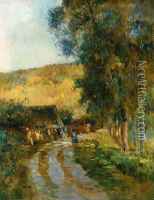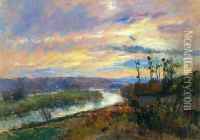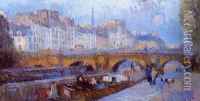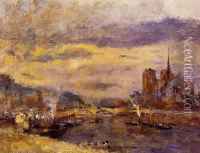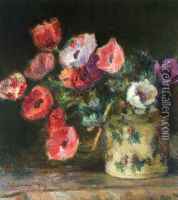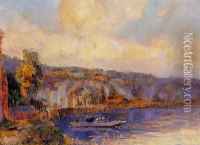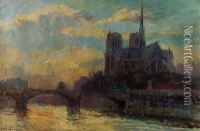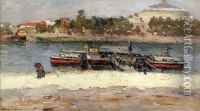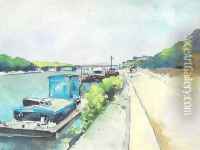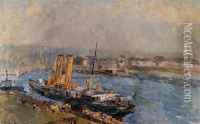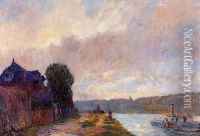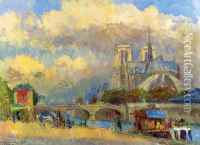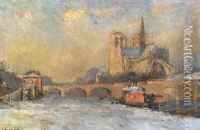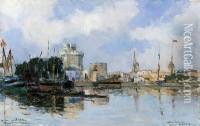Albert Lebourg Paintings
Albert Lebourg, born on February 1, 1849, in Montfort-sur-Risle, France, was a notable Impressionist painter, particularly recognized for his landscapes. His early education in art began at the École Municipale de Peinture et de Dessin in Rouen, where he was tutored by Gustave Morin.
Lebourg moved to Algiers in 1872 where he worked as a drawing teacher and was heavily influenced by the North African light and landscape. This experience significantly shaped his palette, and he began to incorporate brighter colors and light effects into his work. In 1877, he returned to France and settled in the region of Normandy, immersing himself in the French countryside which became a central subject of his paintings.
It was during this period that Lebourg became associated with the Impressionist movement, forging friendships with artists such as Claude Monet and Camille Pissarro. His work was included in the third Impressionist exhibition in 1877, and he continued to participate in the Salon des Indépendants for many years. Lebourg's paintings captured the changing effects of light and atmosphere, employing a palette knife and loose brushwork to convey the nuances of the natural scenery.
Despite his association with the Impressionists, Lebourg never gained the same level of fame as some of his contemporaries. Nevertheless, his work was appreciated by art critics and collectors of the time, and he enjoyed a modestly successful career. In 1896, Lebourg returned to Paris where he continued to paint the city's landscapes and the river Seine, a recurring theme in his oeuvre.
Lebourg's health began to decline in the early 20th century, but he remained active in the art community until his death on January 6, 1928. Today, Albert Lebourg's paintings are held in various museum collections around the world, and he is remembered as a dedicated landscapist who captured the essence of Impressionist sensibility.
